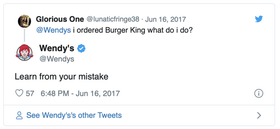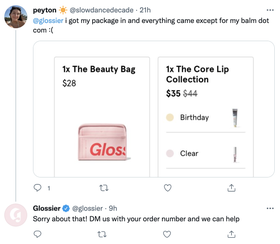5 Tips to Build Your Social Media Marketing Strategy
Are you looking into building a social media presence? Here are five key steps you need to take to build an effective social media marketing strategy.
Read More
Social media has quickly become one of the best ways brands can start to reach more customers. That’s why most businesses set up their branded social media pages ASAP. Organic social media gives them a quick and free way to post regular content updates, connect with customers, and show off all the latest deals while social media advertising allows them to target specific audiences with brand awareness ads.
When it comes to strategic brand awareness efforts, what is the role of social media? It’s one you don’t want to discount.
According to Smart Insights, over 4 billion people in the world now use social media. For brands, that translates into countless opportunities to get in front of ideal customers and build brand awareness. The number of eyes on social media isn't the only reason you should invest in brand awareness efforts, either.
There are a variety of platforms to choose from, which means you can spend your time and money on the places where your target audience spends their time. Essentially, social media allows for better audience targeting.
You can use organic social media brand awareness efforts to inform paid efforts and vice versa. Your platform analytics and demographics can be used to build a better overall brand awareness strategy.
Opportunities to skyrocket reach with trends and viral templates are always available and plentiful.
Social platforms allow you to directly connect and communicate with your current and future customers. The ability to receive live feedback and facilitate discussions with your customers is a powerful tool for increasing your brand awareness and affinity.
Ready to get started? Here’s nine ways to increase brand awareness on social media.
Keeping up with all of the current and emerging social media sites can be nearly impossible for many brands without the help of a social media advertising platform. The goal of social media marketing is to find your customers and your potential audience, so focus on the places where they spend the most time. Limit your efforts to one to three sites to ensure your workload is manageable.
Don’t share or repost the same message and content between platforms. It’s vital to create content specific to each social media platform you’re using. For example, Twitter is a place for short posts limited to up to 280 characters, and Facebook often sees better engagement with longer posts that accompany photos or videos. In comparison, Instagram is all about the quality visuals, and quick witty captions with emojis can go a long way.
Visuals will typically have a positive impact, regardless of which platform you choose. Facebook posts with images have 2.3x higher engagement than those without images. 80% of marketers use visual assets in social media marketing. The most common types of content are images (80%), videos (63%), blogs (60%), and live video (35%). Consider this when determining how to excite your audience, stand out from the competition, and connect with your followers.
Social sharing is one of this type of marketing’s greatest powers.When users share your content or posts, not only do you reach your immediate audience, you reach the user’s network as well. The act of sharing represents a recommendation from a friend, family member, influencer, or peer, which is essential to convincing potential consumers to become customers.
People who enjoy reposting tend to look for humor, values-driven content, and posts that create an emotional attachment. Wendy’s marketing team earns shares and engagement through comical comebacks on Twitter that delight their audience enough to share the laughter. Remember to add social sharing options to your blogs, ecommerce store, and even certain email content so your audience can share directly from those sources as well.

Oof, burned! (Don’t you just love it when brands roast each other on social media?)
Connect with influencers who share your audience, complement your offering, and don’t compete with you to tap into established groups of consumers. Joint venture partnerships with influencers can vary in structure. They may include exchanging content, packaging bundled giveaway offerings, and developing an affiliate fee structure. How complicated and involved you want to make these relationships is up to you. Also, follow influencers who align with your brand to observe and learn from their posts. See what they discuss and watch their engagement levels to see what types of content perform best with their audiences. Your team can use their popular posts to spark new ideas for your brand.
Social media is about building a community, so don’t be stingy with your likes, comments, and shares. Developing a culture of engagement on your profiles will encourage others to do the same. Mentions are especially powerful. Customers and followers love being mentioned on social media. This simple act rewards your audience by making them feel recognized and appreciated. Mentioning partner brands or influencers can also earn you favors with other accounts that similarly aim to increase their following and expand their audience.
Healthy customer relationships are essential to growing your brand awareness and boosting sales. When you engage with your customers on social media, you create an opportunity for their network to learn about your brand. Visitors can also learn more about your company and get a sense for your professionalism by reading your responses to questions. If these responses are a good reflection of your company, they’ll help you build trust with your future customers.

Many direct-to-consumer (D2C) brands, like Glossier, offer a masterclass in how to use social media to maintain relationships with customers.
If your marketing team can react quickly, your brand can leverage trends and breaking news to get discovered, entertain your audience, and encourage followers to share your posts.
Unfortunately, social media is not the equal-opportunity landscape that it once was. Facebook, Instagram, and other platforms actively limit the reach of posts to your audience, which has led to plummeting engagement across brands and accounts. To combat this, companies should invest in promoted posts and paid advertising via posts and stories. Ads that come across as organic perform best and lead to more conversions.
To get started with social media ads, you’ll need a holistic social media advertising platform like AdRoll. Whether you’re looking to boost brand awareness, improve your audience targeting, or design engaging ad creative (hello dynamic ads!), we’ve got you covered with our AI-powered solutions.
As with every good digital marketing plan, remember to track everything possible with your brand awareness campaigns. Pay attention to engagement statistics on your social profiles to see how much reach and interaction your posts, ads, and other content are receiving. Track whether the visibility of your posts is trending upward and continue to experiment until you hit your stride. Tracking links on posts (e.g., bit.ly) will help you gather and analyze this information. Also, refer to your website analytics to determine where your referral traffic is originating.

AdRoll cross-channel performance dashboard will even reveal all the high-level insights you should be paying attention to.
To make the measurement process easier, consider using software tools to help you analyze and optimize your social media activities. Platforms like Ahrefs help you observe what your competitors are doing well and learn how you can improve. Social mention tools can help you track any mentions of your brand on various social sites to see how much buzz you’re generating.
If you’re looking for a marketing and digital marketing platform that has everything you need in one place, the search is over. With AdRoll, you can easily launch ads and emails that engage existing customers, attract new customers, and grow revenue. With the cross-channel performance reporting dashboard, you can easily measure your marketing efforts across platforms, including social, and see how channels work together to generate conversions.
Organic social media is free to use for brands and individuals. It includes things like making a Facebook page, Instagram, TikTok, Pinterest, or other social accounts. These accounts become platforms that brands can use to connect with their ideal customers.
Paid ads are usually the next step in social strategy.
What is brand awareness?
Brand awareness is just that — making current and potential customers aware of your brand. These efforts are about telling a brand story that creates emotional connections with customers.
Yes! Social media has other uses, like:
customer service and communications
giveaways and other promotions
In-platform shopping
Another key strategy for many businesses is social retargeting. Social media retargeting is when a user who has engaged with your brand in a certain way gets served tailored ads on social media. It is an effective way to re-engage shoppers who abandoned their carts, current customers, and even those who just visited your site. To learn more about social retargeting, check out these resources:
For step-by-step instructions on launching ads on Facebook, Instagram, TikTok, or Pinterest, check out our Social Ads Guide. Then, use our tips, tricks, and guides below to optimize your strategy and increase your brand awareness!
Last updated on May 15th, 2023.